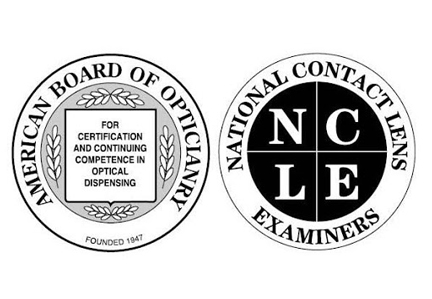
By Board of Directors and Staff at ABO-NCLE
Dear Eyecare Professional,
As COVID-19 (the Corona virus) continues to impact the global community, we want to update you on the steps to take to ensure safety for all eyecare professionals.
Based on guidance from the World Health Organization (WHO), the Center For Disease Control (CDC) and the American Academy of Ophthalmology (AAO), several reports suggest that the virus can cause conjunctivitis and possibly be transmitted by aerosol contact with conjunctiva. Patients who present for conjunctivitis who also have fever and respiratory symptoms including cough and shortness of breath could represent cases of COVID-19 even if they have not traveled internationally or been in contact with anyone that has traveled internationally. Although viral conjunctival infection is usually caused by adenovirus, COVID-19 may cause ocular signs and symptoms, including photophobia, irritation, conjunctival injection and watery discharge. These are predominantly self-limited but may require supportive care. Ocular discharge and tears are a potential source of contamination and the eye is also a route of exposure, so personal protection is required for the patient and their care team.
Protection for the mouth, eyes and nose when caring for patients is recommended, whether they are potentially infected with corona virus or not. The virus that causes COVID-19 is very likely susceptible to the same alcohol and bleach-based disinfectants that ophthalmic offices commonly use to disinfect ophthalmic instruments and office furniture. The same disinfection practices already used to prevent office-based spread of other viral pathogens are recommended before and after every patient encounter. As eyecare professionals, you are touching faces and ears, pulling back hair to see the temple fit - all things that could easily pass on the COVID-19.
There is currently no vaccine to prevent COVID-19. The best way to prevent illness is to avoid being exposed to this virus. Vigilance and good hygiene-thorough handwashing, using gloves, eye protection, appropriate face mask, disinfecting equipment and other recommendations provided by the CDC-in the office when in contact with bodily fluids, such as tears, can help prevent infection. It is important to proactively reinforce such infection mitigation techniques with doctors and staff, no matter the size of the office setting. The virus is thought to spread mainly from person-to-person, between people who are in close contact with one another (within about 6 feet) through respiratory droplets produced when an infected person coughs or sneezes. These droplets can land in the mouths or noses of people who are nearby or possibly be inhaled into the lungs.
Close contact can occur while caring for a patient, including: being within approximately 6 feet (2 meters) of a patient with COVID-19 for a prolonged period of time; having direct contact with infectious secretions from a patient with COVID-19. Infectious secretions may include sputum, serum, blood, and respiratory droplets. If close contact occurs while not taking all recommended vigilance and good hygiene precautionary measures, healthcare personnel may be at risk of infection.
Healthcare personnel caring for patients with confirmed or possible COVID-19 should adhere to CDC recommendations for infection prevention and control: Assess and triage these patients with acute respiratory symptoms and risk factors for COVID-19 to minimize chances of exposure, including placing a facemask on the patient and placing them in an examination room with the door closed; Use Standard and Transmission-Based Precautions when caring for patients with confirmed or possible COVID-19; Perform hand hygiene with alcohol-based hand rub before and after all patient contact, contact with potentially infectious material, and before putting on and upon removal of protective gear, including gloves. Use soap and water if hands are visibly soiled.
Please have a talk with your office manager or doctor and/or staff. We will be working hard to communicate with all certificants and will send emails and post updates as necessary.
Together we will get through these challenges.
Sincerely,
Board of Directors and Staff at ABO-NCLE
For more information on best practices for in-office infection control, go to our CE, The Hygienic Optician, at 2020mag.com/ce.











